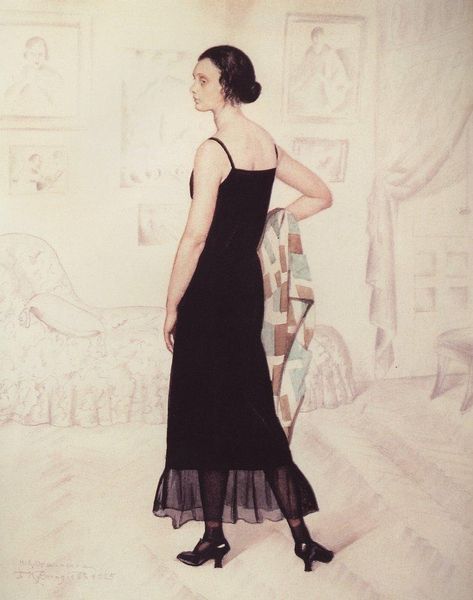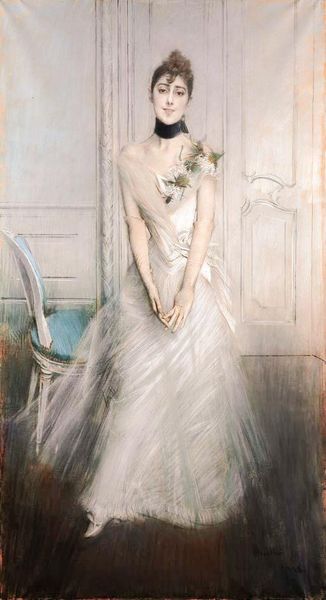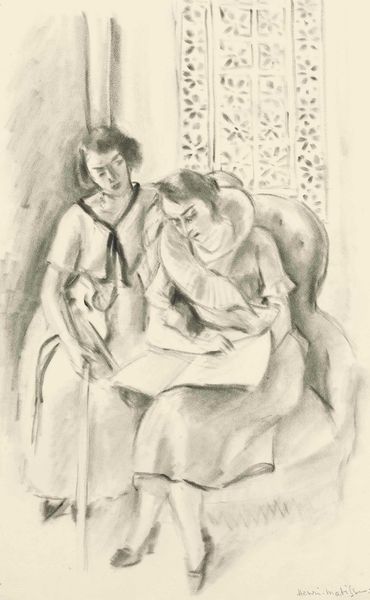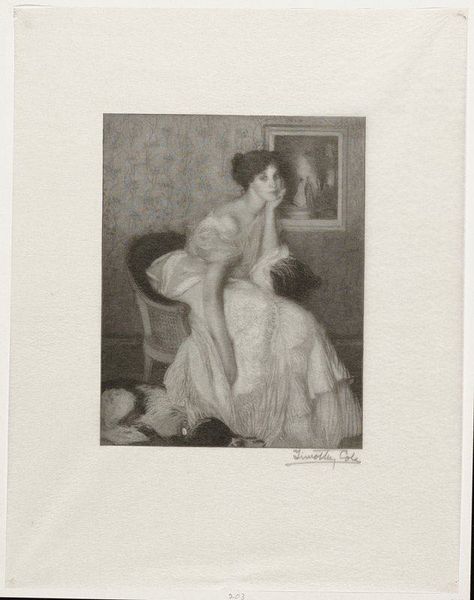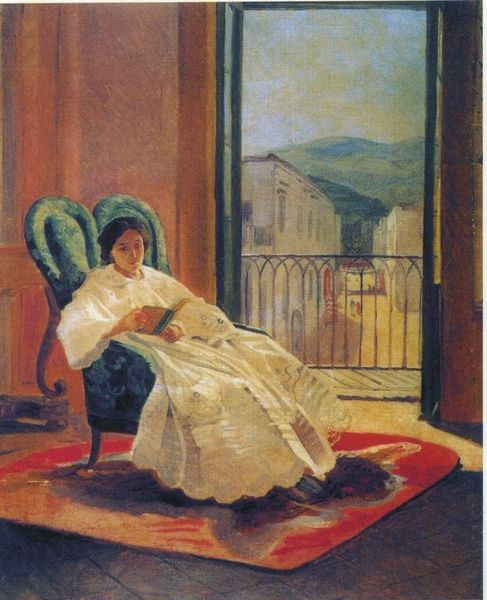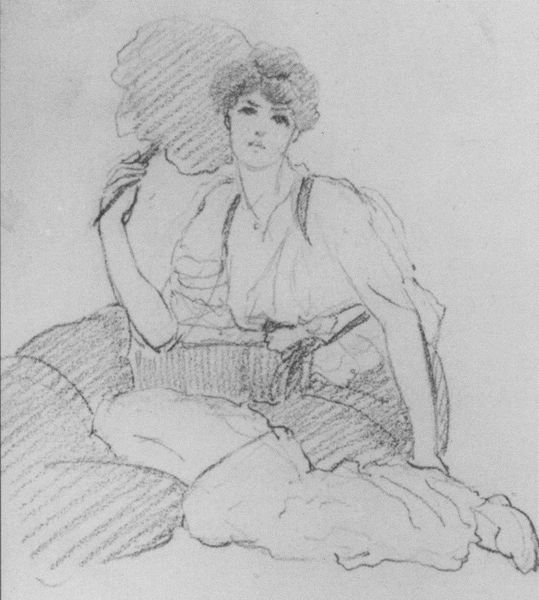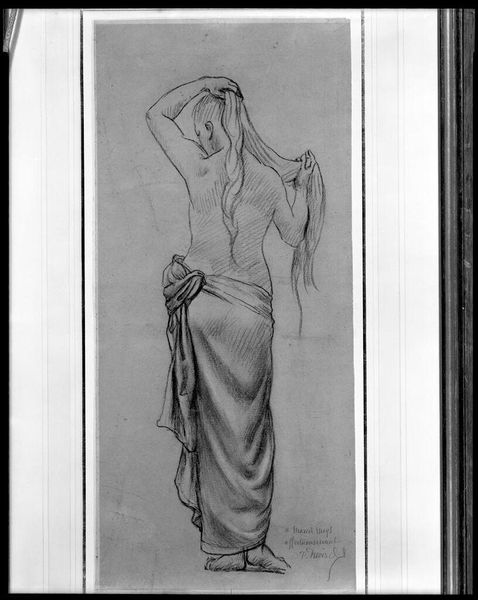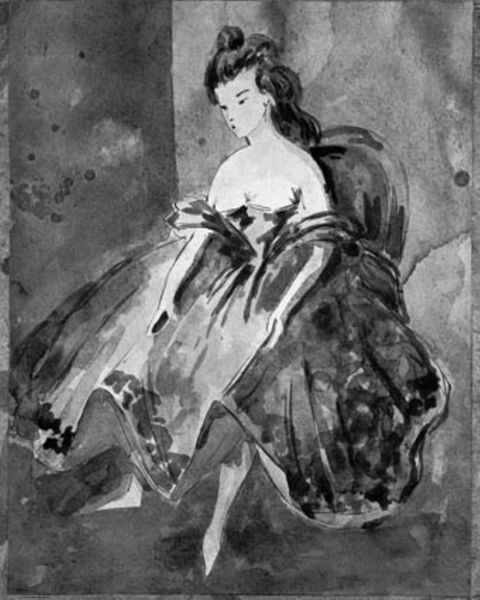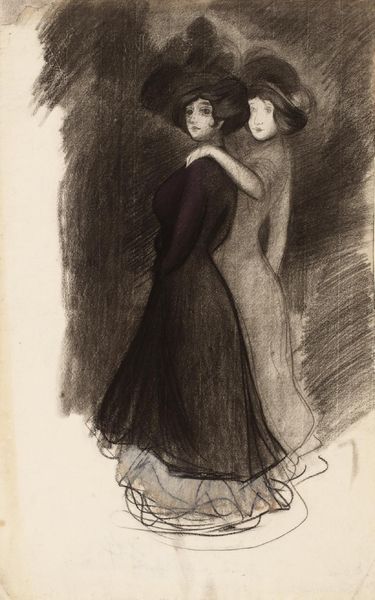
drawing, charcoal
#
portrait
#
drawing
#
charcoal drawing
#
figuration
#
intimism
#
charcoal
#
portrait art
#
modernism
Copyright: Public domain
Curator: Isn't there a wonderful stillness to this piece? It's almost as if she’s paused mid-conversation. Editor: I feel that. Kustodiev rendered this portrait in 1920. The sitter is O.P. Myasoedova. We are so fortunate to have such an example of his portraiture available. It’s charcoal on paper. Curator: Charcoal captures a unique softness, doesn't it? Even though the lines are sharp, the shading almost melts into the background. There’s something both delicate and powerful in her gaze. Editor: Indeed, Kustodiev, despite his own struggles with illness at the time, became a keen chronicler of the changing Russian societal structure and its artistic communities in this time. Look at how he uses the texture of the charcoal to portray wealth and sophistication amid post-revolutionary hardship. The fur stole, the fashionable shoes... Curator: Exactly! There's almost a decadent feel despite the somber tone. And those shoes! They speak to a world that feels both close and distant. I find myself wondering what her story is... who was she? Editor: She was likely connected to the artistic circles that Kustodiev himself moved in, as many of his portrait subjects were fellow artists, actors, and writers. Kustodiev also seemed committed to picturing a continuity of pre-revolutionary society even during radical changes in society and visual arts in Russia. The details and the composition don't deny these shifts, however. The flatness of the picture space creates a slightly unsettling sense of disconnect, in my eyes. Curator: That disquiet is definitely palpable. It hints at the unease beneath the surface. There's a beauty, but it’s a fragile one. A snapshot of resilience perhaps, amidst uncertainty. Editor: Very well put. I'm particularly struck by the directness of her gaze. It feels like she's both inviting and challenging us, daring us to truly see her. Curator: Maybe that's the most striking part of portraiture. It feels less about recording a likeness, and more about capturing the essence of a soul, right? Editor: Perhaps that's true for this portrait. In a way, the directness, the pose, even the rendering can give us pause to consider portraiture’s lasting cultural roles as documents of an era but also a statement of identity and a social mirror of who we choose to value.
Comments
No comments
Be the first to comment and join the conversation on the ultimate creative platform.
